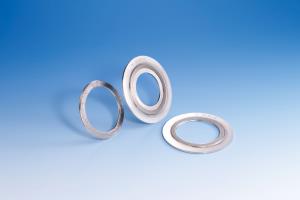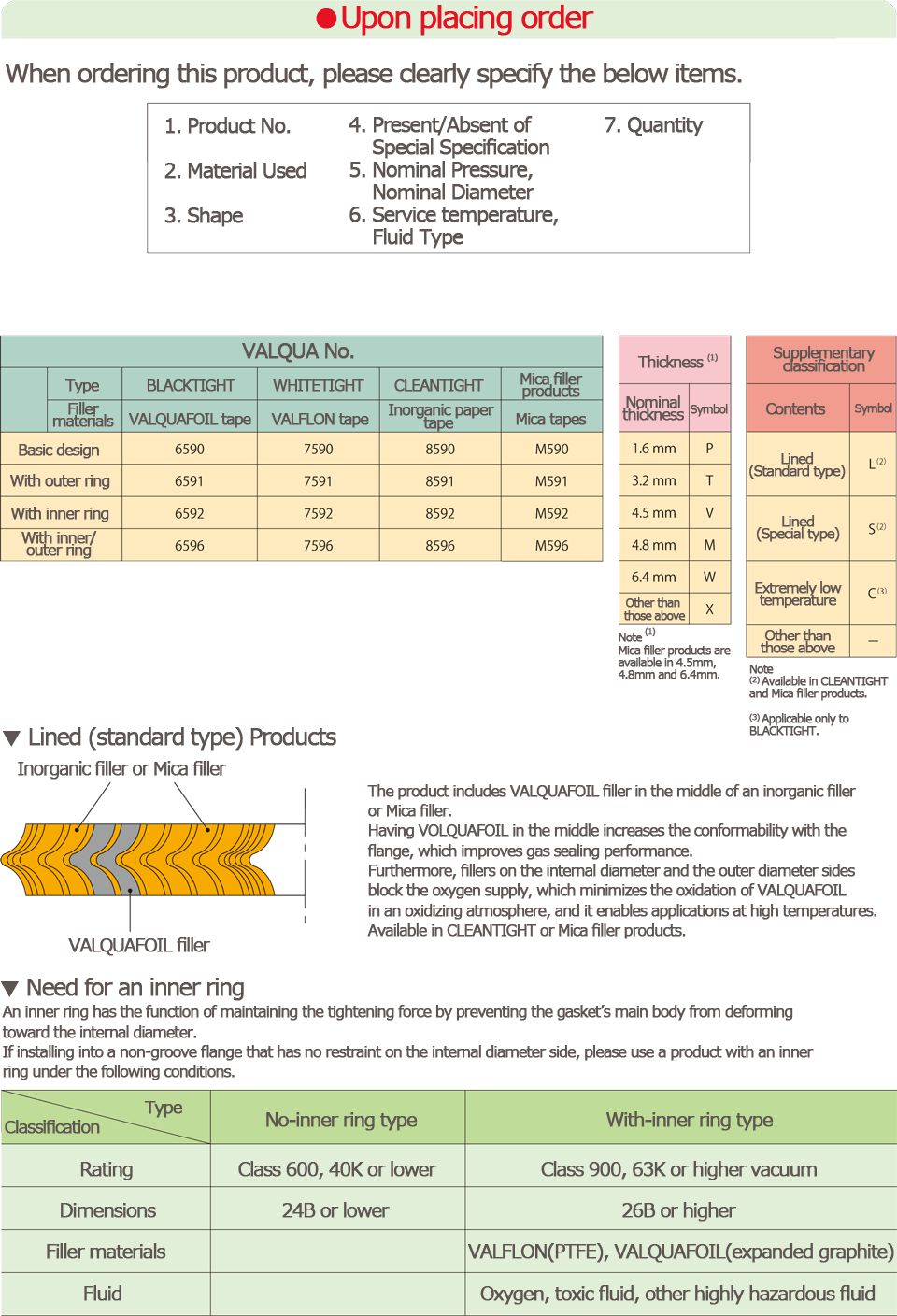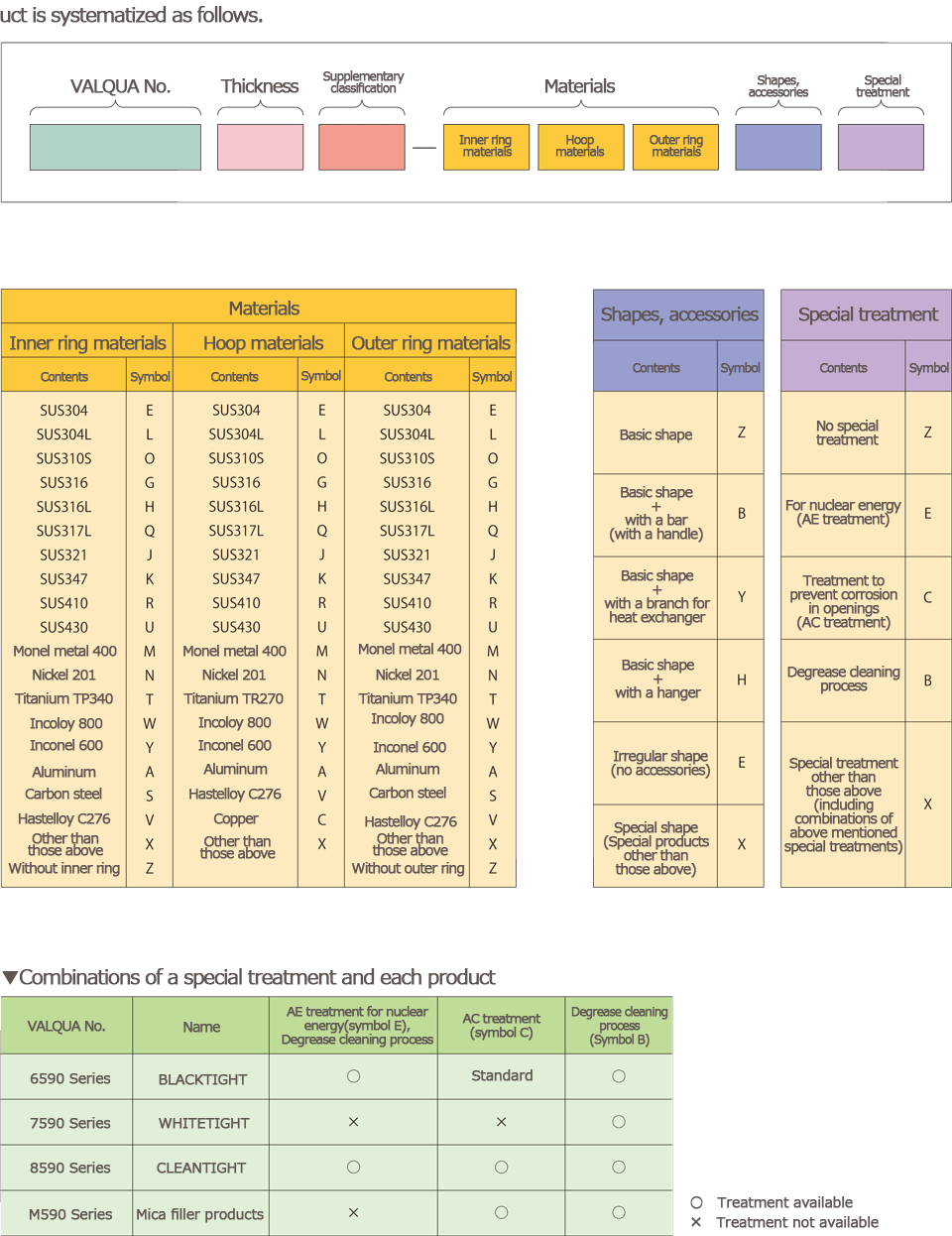VALQUATIGHT GASKET
Spiral Wound Gaskets use Non-Asbestos inorganic paper, VALQUAFOIL™ (expanded graphite) and VALFLON™ (PTFE) tape as filler materials, and exhibit good elasticity by means of a V-shaped hoop.

- VALQUA No.
- M596
- Product name
- Spiral Wound Gaskets made of Mica filler (with inner/outer ring)
- Features1
- Spiral Wound Gaskets using mica film as filler material
- Features2
- Minimizes the deterioration of strength due to heating.
- Features3
- The outer ring of the gasket with an outer and inner rings is useful as a guide for adjusting the amount of reinforcement and tightening of the gasket, making gasket centering easy.
- Features4
- In addition, use of an inner ring prevents the inner diameter side of this gasket from deformation even if the gasket is tightened too much. For this reason, gaskets with inner and outer rings are the most reliable high-temperature/high-pressure gaskets that can be mounted on raised face flanges.
- Inappropriate fluid
- Inflammable gas, Poisonous
- Application
- For H.T.S.(Oxidizer: The mixture of Sodium nitrate, Potassium nitrate, and Sodium nitrite) used as high temperature Heat transfer oil









